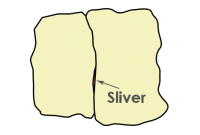

Under the General Tab chose Snapping Tolerance: 50 map units.If it’s not already there, add the Editor toolbar to your workspace by going to View > Toolbars > Editor.Set the Editing Parameters – In order to perform the editing procedures, it is important to set the editing parameters as follows:.Click on Yes to add feature classes that participate in topology.


If the file has topological errors, it will have multiple lines one associated with the main polygon, and the others associated with the locations of the gaps and/or overlaps in the data (see Figure 4).If the preview of ISO3_topology_Topology shows only one red line that follows the outline of the main polygon, the file is free of topological errors.Click on ISO3_topology_Topology and the Preview tab.Select Rule > Must Not Have Gaps and Click OK.Select Rule > Must Not Overlap and Click OK.Select the feature that will participate in the topology and Click Next.Accept the default name (ISO3_topology_Topology) by clicking Next.Right click on the feature dataset (ISO3_topology) and choose New > Topology….Output Feature Class: Name the feature class ISO3_work_yymmdd.Output Location: The empty feature dataset created in section 2 above.Input Features: The path to the data under check.

Right click on the feature dataset and choose Import > Feature class (single)….For the vertical coordinate systems, leave as.Select the Geographic Coordinate System > World > WGS 1984.Right click on the geodatabase and choose New > Feature Dataset.Name the geodatabase ISO3_update_yymmdd.mdb (e.g.Right click in open space and choose New > Personal Geodatabase.In ArcCatalog, go to the folder where you want to save the geodatabase.


 0 kommentar(er)
0 kommentar(er)
